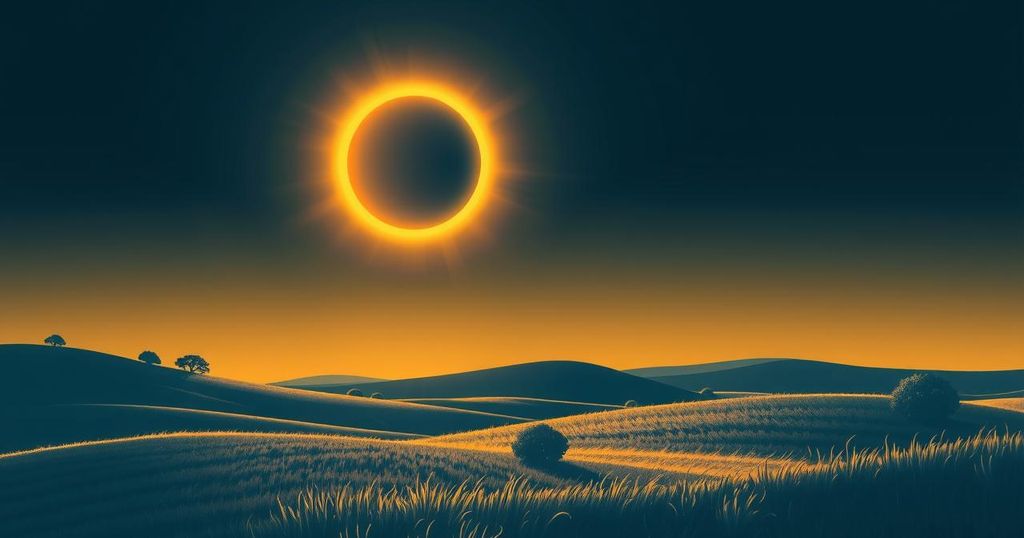Today’s Partial Solar Eclipse: Visibility, Safety, and Observations

A partial solar eclipse will take place today, visible from eastern Canada to Siberia, starting at 8:50 AM UTC and lasting approximately four hours. The peak visibility will occur over northeastern Canada and Greenland. Astronomers stress the importance of eye safety while observing the eclipse, as even minor defects in glasses can cause damage. The last partial solar eclipse in mainland France was on October 25, 2022.
Today, a partial solar eclipse will occur, with the moon partially obscuring the sun, visible in regions from eastern Canada to Siberia. This event is notable as it marks the first solar eclipse of the year and the 17th of the 21st century, lasting approximately four hours from 8:50 AM to 12:43 PM UTC.
According to astronomer Florent Deleflie from the Paris-PSL Observatory, the initial viewers of the eclipse will be in Mauritania and Morocco, while those in northern Siberia will be the last to observe it. The peak visibility, witnessed at 10:47 AM UTC, will be strongest over northeastern Canada and Greenland, where up to 90% of the sun’s disk will be obscured; however, complete darkness will not ensue.
A solar eclipse occurs when the Earth, moon, and sun align, but in this case, the alignment is not sufficient for a total eclipse. Deleflie explains that the moon’s shadow will not reach the Earth’s surface, hence no total eclipse will occur.
In France, the eclipse will be observable between 10:00 AM and 12:00 PM UTC, obscuring 10% to 30% of the sun, depending on the location. Due to the minimal coverage, there may not be a drastic change visible to the naked eye. For those interested in viewing it, proper eye protection is essential to avoid potential eye damage from the intense sunlight.
Deleflie emphasizes the importance of using safe eclipse glasses, warning that even minor defects in such eyewear can lead to serious eye injuries. This solar event follows a recent total lunar eclipse, which caused the moon to appear red, a phenomenon common after the moon completes half its lunar cycle.
The last partial solar eclipse visible in mainland France occurred on October 25, 2022. The next significant event will be a total solar eclipse on August 12, 2026, which, while not crossing France, will obscure 92% of the sun in Paris and 96% in Marseille.
In summary, today’s partial solar eclipse presents a remarkable astronomical event for observers across parts of the northern hemisphere, including regions from Canada to Siberia. With appropriate precautions for eye safety, individuals can enjoy this significant celestial phenomenon without the risk of eye damage. The event underscores the wonder of solar eclipses and the importance of understanding the dynamics of such occurrences.
Original Source: www.jordannews.jo






